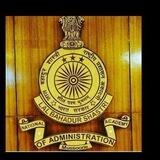This channel is an initiative of CSE Topper. Now bringing to you a Free GS Improvement Series for Mains-25. Will be helpful if you are appearing for next attempts as well.
WhatsApp
👇🏼👇🏼
https://whatsapp.com/channel/0029Valz
Информация о канале обновлена 18.11.2025.

 Показать ещё
Показать ещё
